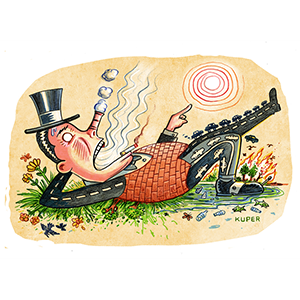Auto Basecoat Paint Options: Choosing the Right Finish for Your Car
Published in Entertainment Articles
Choosing the right paint finish for your car involves more than just selecting a favorite color. The basecoat paint you choose affects how the car looks, how easy it is to maintain, and how long it will last. Whether you’re refreshing your daily driver, fixing up a used car, or restoring a vintage model, understanding your basecoat options can help you make the right choice.
This guide will walk you through different types of basecoat paints, what they offer, and how to pick the right one for your project.
What Does Basecoat Paint Do?
A basecoat is the layer of paint that gives your car its visible color. It sits between the primer underneath and the clear coat on top. The basecoat does not usually provide protection or gloss. Its main job is to deliver the pigment and the visual effect.
After it dries, the clear coat is added to protect the basecoat, to give it shine, and to make it more durable. The basecoat must be applied well, because any flaws in it will show through the clear coat. The surface needs good preparation, with primer and smooth sanding, so that the basecoat sits evenly and without defects.
The basecoat also must match or align with what you want in terms of appearance: solid color, metallic sparkle, a matte look, or something more exotic. In auto painting, the basecoat is a key foundation that supports the overall appearance and longevity of the finish.
Solid Basecoat Paint
Solid basecoat paint is one of the most common types of car paint. It contains only color pigment and no special effects like metallic or pearl flakes. This type of paint gives a clean and simple finish.
Solid colors are easy to apply and cost less than other paint types. They are also easier to repair if the car gets scratched or chipped. Many factory cars use solid basecoat because it is reliable and straightforward.
Common solid colors include white, black, red, and blue. These colors are easy to match for touch-ups. Solid basecoat is a great choice for people who want a classic look. It is a practical option that offers durability and easy maintenance.
Metallic Basecoat Paint
Metallic basecoat paint has small metal flakes mixed into the color. These flakes reflect light and make the car shine. The paint gives a sparkly look that changes slightly with the light. Metallic paint is popular on sports cars and modern vehicles.
It adds depth and style to the car’s finish. This type of paint can hide small scratches and dust better than solid paint. However, it is harder to apply evenly. If not done right, it can look patchy or streaky.
Repairing metallic paint is also more difficult than solid colors. Still, many people choose it for its bright and eye-catching appearance.
Pearlescent Basecoat Paint
Pearlescent, or pearl, basecoat paints use mica or ceramic particles to create a soft, multi-tone effect. This type of finish adds depth to the paint, often shifting colors slightly depending on the viewing angle.
Pearl paints are known for their elegance and are commonly found on luxury vehicles. While beautiful, pearl finishes require skilled application and are harder to match if touch-ups are needed later.
They also tend to cost more than solid or metallic options. If you want your car to look rich and refined, pearlescent paint offers a unique aesthetic.
Matte Basecoat Paint
Matte basecoat paint gives a flat, non-glossy look that absorbs light instead of reflecting it. It’s often chosen for its modern, bold appearance. Matte finishes are seen on custom builds and high-end sports cars.
However, they are more difficult to maintain. You can’t wax or polish matte finishes the way you can with glossy ones, and they are more prone to showing smudges and scratches.
Special cleaning products are often needed. Matte basecoat is best suited for car owners who are committed to regular, careful maintenance and want a unique finish.
Candy and Specialty Basecoats
Candy basecoat paint is a deep, rich finish made by layering a translucent color over a reflective metallic base. This creates a vibrant, glowing effect with intense color depth. Candy paints are usually found on show cars and custom builds because they’re eye-catching and dramatic.
Applying candy paint requires multiple layers and skilled hands, making it more costly and time-consuming. Specialty basecoats can also include color-shifting paints, chameleon effects, or flake-heavy custom jobs. These finishes offer unique results and are ideal for people looking for custom paint for classic cars or highly personalized vehicles.
Color Selection Tips
Color is a big part of how your car is perceived. Bright colors like red, orange, or lime green make bold statements but may not appeal to every buyer if you plan to sell later. Neutral tones like white, gray, silver, and black have broader appeal and often age better.
Darker colors tend to show scratches more easily but can look sleeker. Lighter colors may hide dirt better and reflect more sunlight, helping keep your car cooler. Think about how the color works with your vehicle’s shape and how much attention you want it to attract.
Matching Paint for Repairs
If you’re not repainting the whole car, you’ll need to match the basecoat to your current finish. Every car has a manufacturer paint code, usually located on the door frame or inside the hood. This helps painters find the original formula.
However, fading from sunlight or wear can make it tough to match the original color exactly. Professional painters often blend new paint into nearby panels to create a seamless look. For the best results, especially with metallic or pearl finishes, matching requires experience and the right equipment.
Paint and Environment
Your local climate should influence your basecoat decision. In sunny areas, darker colors can absorb heat and make the car’s interior hotter. UV rays can also fade paint over time, especially if the clear coat wears down.
Light colors reflect sunlight and are better at hiding dust or scratches. In rainy or coastal regions, you want paint that holds up well to moisture and road salt. A good clear coat helps protect against corrosion, but starting with a quality basecoat ensures the color and finish won’t degrade prematurely.
Application Considerations
Basecoat paint should always be applied in a clean, controlled environment. The surface needs to be smooth, properly sanded, and primed. Any dirt, oil, or moisture can cause defects in the finish.
The painter must use the right spray techniques to avoid streaks or uneven coverage. Each coat needs time to flash or dry before applying the next one.
After the basecoat, the clear coat is added to seal in the color and add protection. Whether done in a professional shop or at home, proper technique is key to achieving a high-quality result.
Durability and Maintenance
Your basecoat’s durability depends not just on the paint itself, but how well the clear coat protects it. Once your paint job is finished, regular maintenance is crucial. Wash the car often to remove dirt and pollutants that can damage the finish. Use soft materials and avoid harsh chemicals.
For glossy finishes, waxing helps maintain shine and adds a layer of protection. For matte or specialty finishes, follow specific care instructions. Small chips or scratches should be repaired quickly to prevent rust or paint failure. With the right care, a good basecoat and clear coat combo can last many years.
Budget, Costs, and Value
The cost of a basecoat paint job depends on factors such as the quality of paint, the complexity of the color or effect, the experience of the painter, and the extent of repair or surface preparation needed.
Solid basecoats are typically the most affordable to source and apply, while metallic and pearlescent paints cost more. Specialty options like candy or custom finishes increase the price significantly due to extra layers and care.
Labor time is also higher for complex finishes. When deciding, weigh the cost against the value you get. A premium finish can add prestige and appeal, but it must last and perform. Spending more now may mean fewer repairs later.
If the vehicle has sentimental value or is a show car, investing in a high-end basecoat makes sense. If it’s a daily driver, you may prefer a more balanced and durable finish.
All About Auto Basecoat Paint Options
Choosing the right auto basecoat paint is a critical part of your car’s overall look and longevity. Whether you want a clean, classic finish or a bold custom design, there’s a basecoat that fits your vision and budget.
Solid, metallic, pearl, matte, and specialty options all offer different advantages depending on your goals and maintenance habits. Take time to consider your climate, color preferences, and how you plan to use the car. With the right basecoat and proper care, your car will not only look stunning but also maintain its finish for years to come.
Did you find this article helpful in any way? Check out the rest of our blog for more related content!











Comments